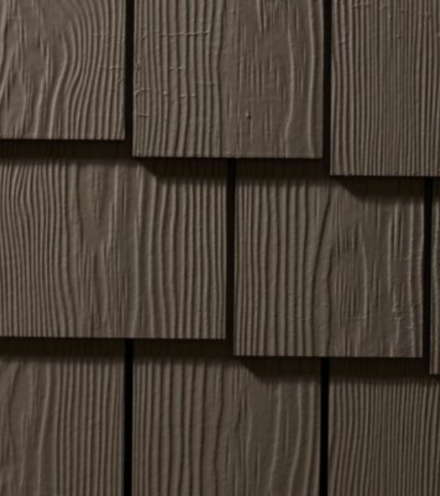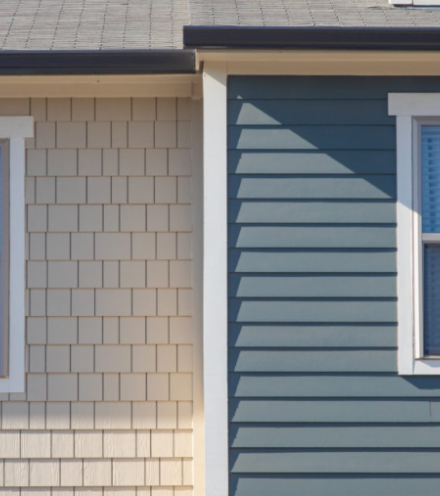When the time comes to choose a new siding for your home, it can be both an exciting and an overwhelming time. New siding can give your home a fresh new appearance, especially with the number of choices that are available on the market today. However, all of those choices can lead to confusion and a feeling of being overwhelmed when you need to consider the style and appearance of the siding you choose.
Two of the most common styles of siding on the market today are lap siding and board and batten. Both can be used alone or together to give your home a beautiful new look, but they are two very different styles that will give your home different appearances depending on how and where you use them. Understanding the differences between them can help you decide which one will be right for your home.
Board and Batten Siding
Board and batten siding is one of the oldest siding styles in the United States. It was first introduced when sawmills became common and homeowners wanted an exterior material that could offer better protection and fewer gaps than log homes.
Board and batten siding is made up of two different pieces. Wide planks are installed first, running vertically up the sides of the home. The gaps or joins between the planks are covered by a thin strip known as a batten, which is how the style gets its name.
Board and batten has a three-dimensional appearance to it, with the battens protruding further off the surface of the home. This style is frequently seen on farmhouses, cottages, beach houses, and some rustic homes. It can help make homes look taller by drawing the eye upward, and it can help emphasize certain architectural styles, like the modern farmhouse.
Since board and batten siding is made up of two pieces, it’s important to choose a highly durable and low maintenance material when installing this style. This is because wood, which needs to be painted or stained, will peel and chip every few years with exposure to UV light from the sun. The battens can be hard to scrape and time- consuming to paint, making this a more difficult style to maintain when made of wood. Using a lower maintenance material that resists peeling and chipping, like fiber cement, can help you extend the appearance of the siding for longer.
Lap Siding
Lap siding comes in many different forms including Dutch Lap, ShipLap, and Clapboard. This is a horizontal siding, which gets its name because each course overlaps the one before it. Lap siding is one of the most commonly installed styles, and complements a wide range of different homes and architectures.
Lap siding can take on a few different subtle styles including being installed in a tight ShipLap or coming in different widths, so you can have wider or narrower planks depending on preference and where the material is being installed.
In the same way that board and batten can lengthen the appearance of a home, lap siding can be used to elongate the appearance of a property, drawing the eye along it horizontally. This can be complementary to narrow properties, as well as to properties that have a lot of changing detail or decorative trim that needs a classic and unobtrusive siding to be installed alongside it.
Lap siding can come in a number of different materials. Like board and batten, it was first created in wood as sawmills became more common and different styles began to emerge. Wood can make the maintenance of any siding more difficult, however, which is why materials like fiber cement, which have a realistic looking wood grain and come in many different widths of lap siding, can be beneficial. With fiber cement, you don’t need to worry about your siding the way that you may have to with wood. This is because fiber cement resists moisture, insect activity, and chipping and peeling, so your siding can look its best for longer.
Combining Styles
Both board and batten and lap siding work well together as well as being attractive on their own. If you like the look of both styles, it’s possible to combine them to help show off the different architectural details of a home.
Board and batten siding can be installed on bump outs and below peaks and gables to help show them off better, while the lap siding can become a backdrop for the rest of the home. Used this way, it helps call attention to the two different styles of siding, putting more emphasis on them both. It’s also possible on homes made up of different sections to cover one in board and batten and another in lap siding. This can help emphasize the separate areas, and when done in one color, l can help create a unified look for the entire property.
Get Your Ideal Siding
Both board and batten and lap siding are attractive, versatile styles that can enhance a number of different architectures and homes. Whether you choose to use one on its own or you choose to combine styles for a more unique appearance, make sure that you also choose to use a durable and low maintenance material like fiber cement so that your home can maintain its good looks for longer. Find your ideal siding, and make the most of your home’s exterior today.
For more information on board and batten and lap siding, contact an expert at Allura today.




